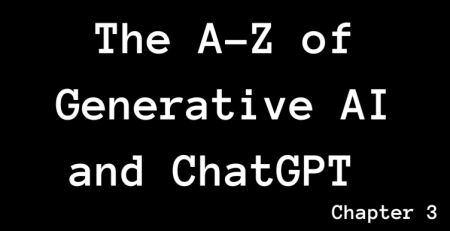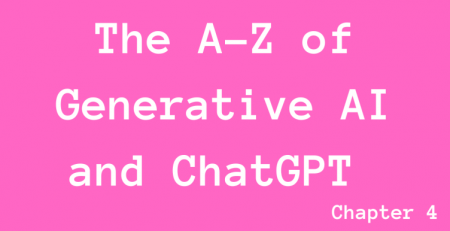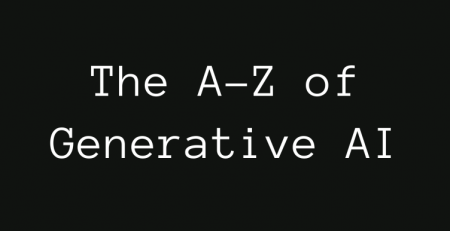Generative AI – A Tale of Two Companies (Part 2)
Welcome back and make yourself comfortable. I was telling you a story, a story about two competing companies preparing to make the most of the opportunities offered by GenAI and the cloud.
If you missed Part 1 it’s here.
They’re both huge, globe-spanning manufacturing organizations, each with its headquarters on an island; Ollimor on the island of Aireach, Farhatch on the Isle of Cliste.
Both organizations are busy preparing for the new world heralded by the advent of cloud in general and GenAI in particular with all the opportunities they offer business and with all the challenges they bring.
We’ve seen what is happening over on Aireach. There Ollimor’s management is focusing on exploiting the benefits of GenAI but has left monitoring and responsibility for cloud usage and cost to regional and local IT bosses.
Farhatch, meanwhile, is fully committed to pursuing a FinOps strategy that makes use of AIOps to maximize efficiencies. Farhatch’s CIO, Isabella Decker, is clear about her goals. “We want our adoption of GenAI to be sustainable.”
To Decker’s way of thinking, controlling costs is an essential element of sustainability, as is ensuring the best achievable operational IT environment for clients and colleagues. “If we’re going to commit fully to this strategy, we have to be disciplined, or we’ll find ourselves having to answer tough questions. Just because you have hot and cold running water, it doesn’t mean you always leave the taps open.”
The first thing Decker did was secure the buy-in of the Farhatch board for FinOps and AIOps adoption. It wasn’t a difficult sell. She asked that the business, finance and IT teams all had responsibilities for and oversight of cloud; business for setting Farhatch’s cloud and GenAI goals, IT for delivering them and finance who pay the bills. All parties had to ensure any cost incurred was justifiable and adding value.
Having brought the three functions together, Decker wanted to make sure the arrangement would work in practice. She is adamant that good visibility is essential and that required that all parties had excellent data and equally good ways of visualising, making sense of it and managing it (which is where AIOps helps).
One of the biggest challenges that Decker faced in getting ahead of cloud spend was getting an agreement to set up a centralized FinOps team. There was resistance. “The different divisions of the company were a bit reluctant. Initially, they saw it as a loss of power. We reframed it. By having a ‘single source of truth’ on cloud spending and a single negotiating team, we could help them make better decisions and, in the long run, make their cloud budgets go further.”
Decker worked hard to gain her colleagues trust and ensured there was good communication between the FinOps team and the company’s divisions. One task that presented itself early on was centralising and cleansing the company’s data so it had a single source of truth. Another was creating a dashboard, so that senior executives across business, IT and finance functions could see at a glance how cloud usage and costs broke down and where performance issues were emerging.
Farhatch considered building a dashboard in-house but decided to bring in a technology partner with an existing customisable solution.
Some results came fairly quickly. Deals with providers were reassessed and Farhatch settled on a mix of private cloud for regulatory and security reasons, low-cost baseline capacity on an extended contract and surge capacity with a good balance between flexibility and price.
However, as anticipated, what the FinOps team could achieve manually had limits. In phase two the company prioritized automation.
Farhatch’s rollout of AIOps followed the launch of the FinOps team, its overhaul of reporting and the dashboard implementation.
“Using AIOps to collate and analyse data across the company allowed Decker’s colleagues to make sense of what she calls “an overwhelming torrent of information that wouldn’t be possible to manage and mine for insights without AI.”
As a result, Farhatch has a much better picture of application performance and cloud usage. It also enabled the tools the company uses to optimize application performance and cloud spend to be partially automated. In some instances, the systems will make the adjustments without intervention. That reduces the pressure on IT teams and is reducing response times to issues across the board. Decker reckons her team has seen its response time almost halved and availability reach nearly 100%.
Farhatch’s staff and customers are both noticing performance improvements.
“There’s no point offering customers tools that help them visualize themselves with the model of their choice if they can’t get the images to load.”
Farhatch has benefited in other ways. The move to AIOps has necessitated that departments communicate better. With a common source of information to work from, the conversations about where difficulties are arising and whether the cost of a given initiative is justifiable are easier to have. They’re now based on hard data that’s available to everyone at the table.
But before we find out what’s happened to Farhatch’s spend on cloud let’s pop back to Aireach to find out how Ollimor is doing.
Initially, Ollimor performed very well. The company kept its eyes firmly on GenAI rollout. It was the first to the market with a virtual showroom and its visualization tools and customization options, which started to win new fans and customers.
However, its initial success brought with it problems. The sheer demand for its virtual showroom and visualization tools means that it started to run slow and potential customers became frustrated. This also caused perception issues for the brand, which had built its reputation on excellence and competence. As fast as people had flocked to try out the new tools, customers deserted them.
Internally too, there is also frustration about outages and slow performance of design and supply chain systems. When tools didn’t work, users reverted to the tried and tested. There was growing scepticism about whether AI was a boon or a curse.
At the same time, costs rose. It was hard for Ollimor’s regional IT leaders to keep tabs on how much was being spent on what, and when the pushback came from finance and the board, it was hard to find data to defend initiatives that were working. The bill for cloud usage had spiralled, and the results fell short of what had been hoped. The atmosphere within Ollimor grew quite hostile. ‘Trust engineers not bots’ was one phrase regularly heard.
Farhatch, meanwhile, prioritized implementing FinOps and AIOps while its AI tools were brought to market. Taking a more comprehensive approach was more demanding, but when the tools were launched they worked. Demand for cloud resources grew sharply, as it did at almost every company embracing GenAI. But the costs were quantifiable and controlled, Farhatch made more efficient use of the cloud and the user experience was excellent.
Good data made it possible to cut better deals with cloud providers that balanced the use of public, private, multi- and hybrid cloud. Idle instances, cases of overprovisioned servers, and unused storage were all cut and whereas before the introduction of FinOps about a third of Farhatch’s cloud usage was deemed wasted the company has already cut that to 26% and expects to trim it further.
As Decker observes, implemented correctly, AIOps can mean 33% less spending on public cloud use and an ROI of up to 470% in under six months.
Now it’s Ollimor who’s left to play catch up and, at the same time, rebuild confidence that AI has a central role in the company’s future, something that the team at Farhatch has no doubts about.
The end.











Leave a Reply